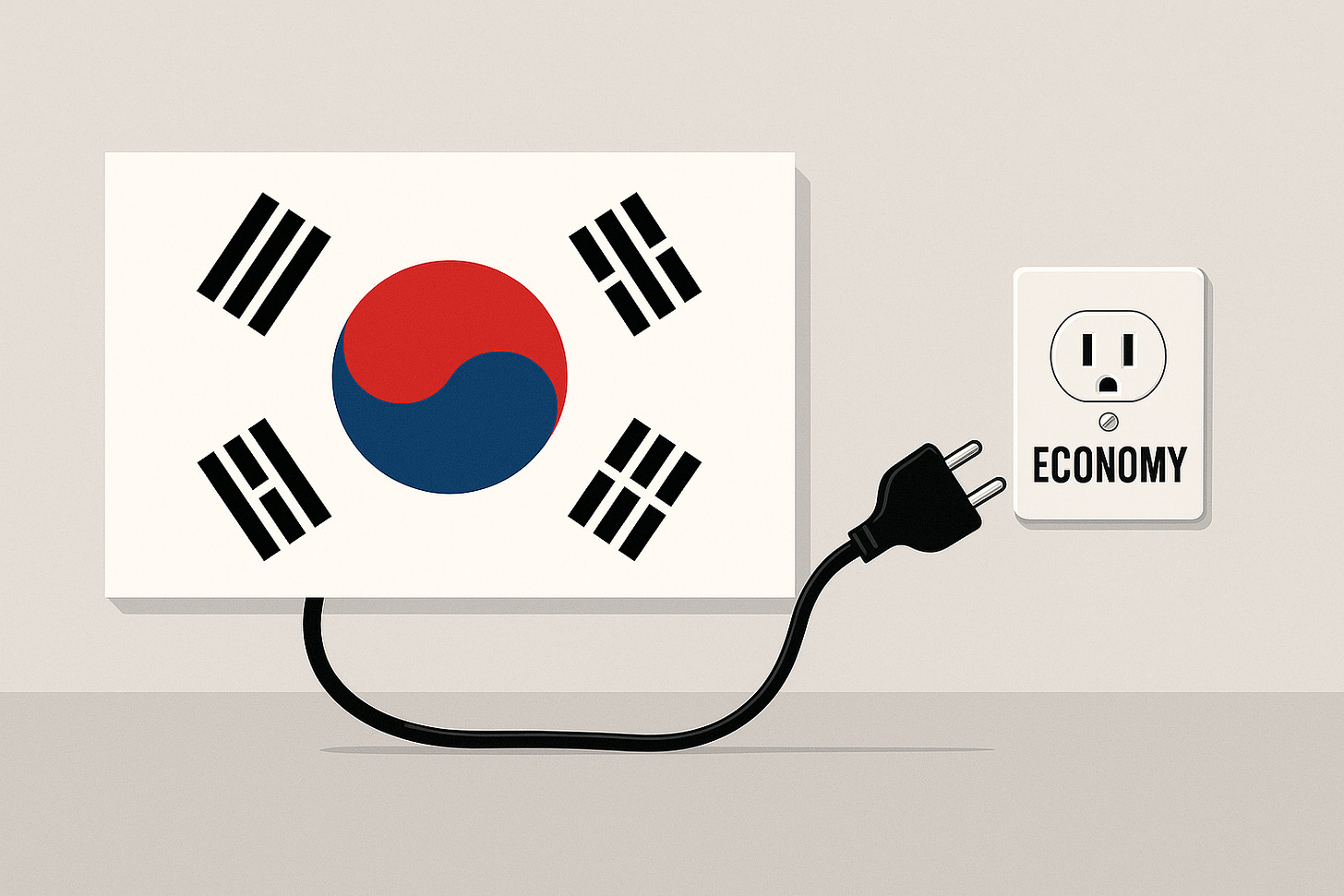By Michael Newman
While the Korean presidential election was effectively a foregone conclusion after the successful impeachment of centre-right President Yoon Suk-yeol, there are some concerning developments that could come from the centre-left Democratic Party President Lee Jae-myung’s coming five-year term.
One of the hallmarks of Korea’s economic success has been its industry and energy policies. Like Japan, Korea lacks natural resources, so it became reliant on imports to keep its manufacturing success story going. Statecraft has been the hallmark of their respective successes. When one possesses no natural resources, it is imperative to understand how to power an economy for decades into the future by taking long-term strategic views. Energy security underwrites national security.
Until now, Korea has run its energy policy from the Ministry of Trade, Industry and Energy (MOTIE). As an economic development agency, it has always prioritised economic growth. To ensure that, Korea’s government has always understood that cheap energy is critical for blue-chip conglomerates like Hyundai, POSCO (Pohang Iron and Steel Company, one of the world’s largest steelmakers), and Samsung to thrive.
President Lee has suggested he wants to move the energy portfolio into a new bureaucracy where the focus is climate change. The irony of Korea’s energy transition is that, up until now, the focus has been on ensuring that the shift prioritised economic development over ideology, with the assumption that commercially sensible application of support mechanisms actually accelerates the chances of decarbonisation. Korea has always seen capital flow as an integral part of its success, not just a default.
On the other hand, Australia is Exhibit A in terms of what happens to energy markets when ideology takes priority over pragmatism. We not only lack statecraft, but the recent suggestion among Australia’s renewables rent-seeking class that the Clean Energy Regulator (CER) should be considered part of the solution to paper over the cracks exposed by the Australian Energy Market Operator (AEMO) wildly miscalculating transmission costs by up to 55 percent shows we lack a cogent plan. It is folly to think that wishful thinking can defeat engineering realities.
As many know when they receive their electricity bills, we have some of the highest energy prices in the world—something that will only lead to further hollowing out of an already decimated manufacturing sector. This is something Korea, with a declining population and the lowest birth rate globally, cannot afford. Perhaps the plan to increase renewables will be an own goal. The mountainous topography of Korea rules out mass deployment of solar and wind. Korea has less than a 20 percent capacity factor on its solar assets.
According to the International Energy Agency (IEA), Korea may have lowered its dependence on coal generation from 240 terawatt-hours (TWh), or 42 percent of the generation mix in 2018, to 200 TWh (34 percent) in 2021. However, gas and nuclear make up 29 percent and 28 percent of power generation respectively, with the balance being renewables.
Korea had electricity generation capacity of around 153 gigawatts (GW) in 2024, according to the IEA. Energy consumption has more than doubled from around 300,000 gigawatt-hours (GWh) in 2000 to 590,000 GWh in 2024. On a per capita basis, it has risen from 7.3 megawatt-hours (MWh) to 11.92 MWh over the respective periods.
The Korea Power Exchange (KPX) has detailed energy mix price breakdowns over the past two decades. Nuclear power has consistently averaged five cents per kilowatt-hour (kWh) over that 22-year period—well below that of solar, wind, and hydro. While Lee is supportive of existing nuclear power continuing, he is against new reactor builds. He also wants to bring forward the closures of coal-fired power a decade earlier, to 2040.
If Korea is to shift away from coal-fired power by increasing the amount of ammonia co-firing to achieve it, Korea’s energy bills are likely to head higher.
That will not be music to the ears of the Korea Electric Power Corporation (KEPCO), responsible for 85 percent of the nation’s energy. KEPCO was obliged to swallow operating losses amounting to US$44 billion to subsidise the nation’s energy price surge during COVID-19. While KEPCO is half state-owned, the National Pension Service is unlikely to view further bond support as a viable option.
Korea has a soft spot for Australia given our support during the Korean War. POSCO—on its own—is our largest export customer, larger than what we send to the United Kingdom and Singapore combined. It was Australia that built POSCO after it was laughed out of the boardrooms of iron ore miners in the United States and Brazil.
For Korea’s sake, the sincere hope is that it doesn’t look to the Department of Climate Change, Energy, the Environment and Water (DCCEEW) as a model for its intended Ministry of Climate Change and Energy. For an export-based industrial economy, it may lose its competitive edge—that edge having been the hallmark of the past five decades.
Michael Newman has four decades of business experience in North Asia and served as NSW’s Senior Trade and Investment Commissioner to the region.





Another country to go Greta Thumberg idiot. Unfortunately an important trading and security partner of Australia.